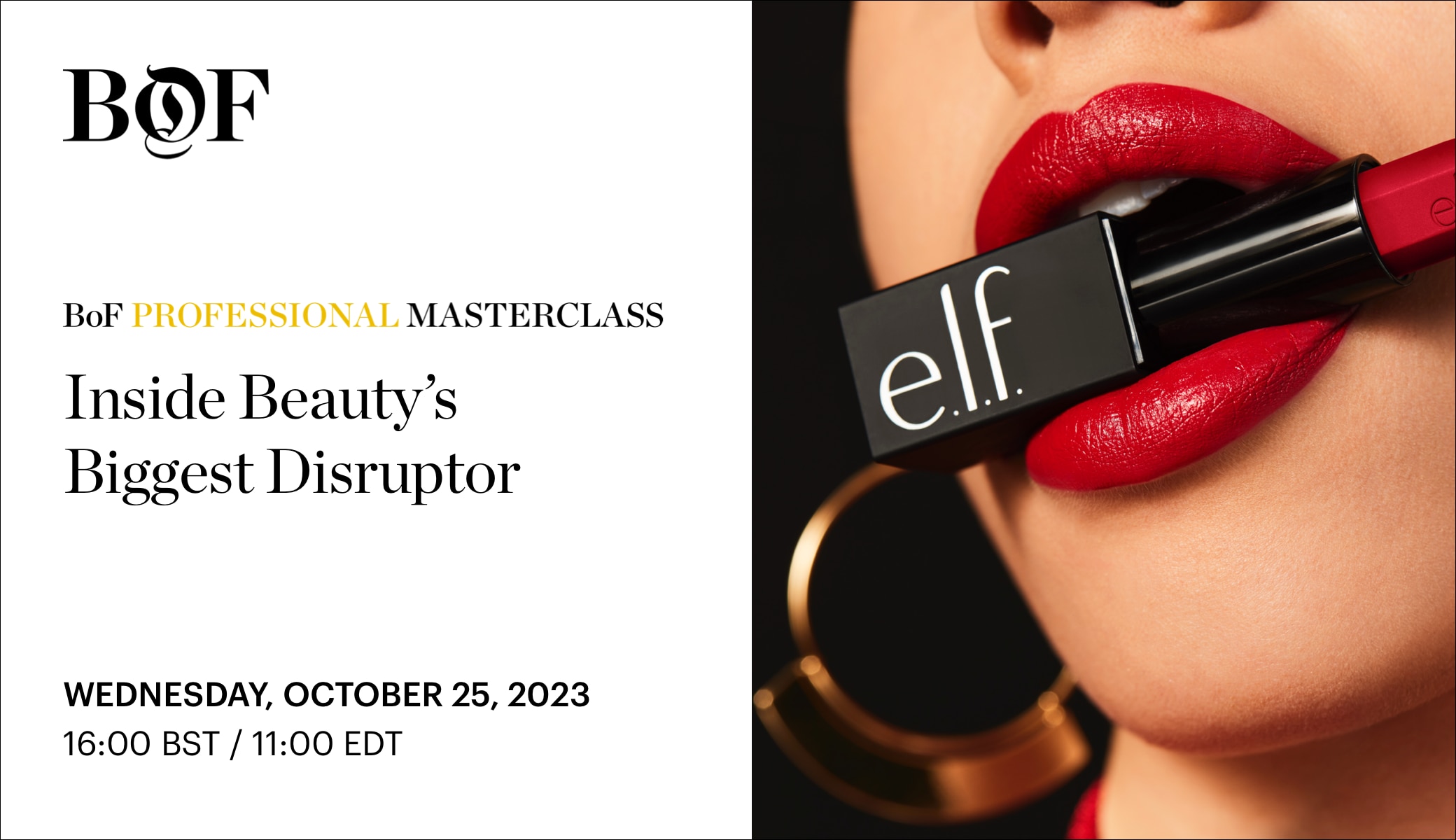
Created by BoF’s journalists and editors, in conjunction with our wider network of leading fashion creatives, thought-leaders, and innovators, Masterclasses are in-depth webinars with supporting resources, designed to deliver key learning outcomes on critical industry topics.
Watch on demand here:
The author has shared a YouTube video.You will need to accept and consent to the use of cookies and similar technologies by our third-party partners (including: YouTube, Instagram or Twitter), in order to view embedded content in this article and others you may visit in future.
Background:
With its strategy rooted in customer centrism, faster-than-ever product turnarounds, and an even quicker social media plan, E.l.f. has rapidly risen from disruptor to incumbent in the global beauty industry. Its recent acquisition of skin care brand Naturium pushes E.l.f.’s presence in the category to 18 percent of sales, and it continues to report impressive quarterly sales growth.
“Our approach is to constantly test, learn and try new things,” said Tarang Amin, E.l.f’s chief executive. “It’s not just about the numbers, but about long-term potential.”
On the latest BoF Professional Masterclass, Priya Rao, The Business of Beauty’s Executive Editor, in conversation with E.l.f.’s chief executive Tarang Amin, dive into E.l.f.’s journey and share insights into the skills and strategies required to scale, and maintain, a beauty brand.
Key Insights:
- E.l.f was founded by father-son duo Alan and Joey Shamah in 2004, who wanted to reverse-engineer the cost of a product sold at $1. The brand launched direct-to-consumer and sold affordable makeup through their e-commerce platform. “People thought that they were crazy,” said Amin. “Their core insight was they couldn’t understand why people charged so much for colour cosmetics. Their basic idea was that if we make a quality product and have it at this extraordinary value and reach consumers in a different way, it could make for really good business.”
- The brand was primarily built off of word-of-mouth marketing and developed “a cult-like following,” according to Amin, who said that loyalty helped the brand reach profitability by its second year.
- E.l.f went public in 2016, and was valued at $1.1 billion at the time of the listing. However, with time, the challenges of being a public company came to pass: the stock went down and investors fled. “One of the dangers of growing really fast is that everything seems to work,” said Amin. “When we hit a wall in 2018, we found that we weren’t investing enough in our brand and we were doing too much, so we had to make some painful choices.”
- In recent years, E.l.f has returned to a period of growth, notching 18 straight quarters of growth. It’s been propelled by its marketing, in particular, its early embrace of new social platforms, like TikTok. The brand is now synonymous with virality on the app and nabbed actress Jennifer Coolidge for a Super Bowl advertisement that generated an estimated 60 billion impressions. Allowing the brands’ teams to experiment with new platforms is “not only a lot of fun, but it’s making a huge difference in the business,” said Amin.



